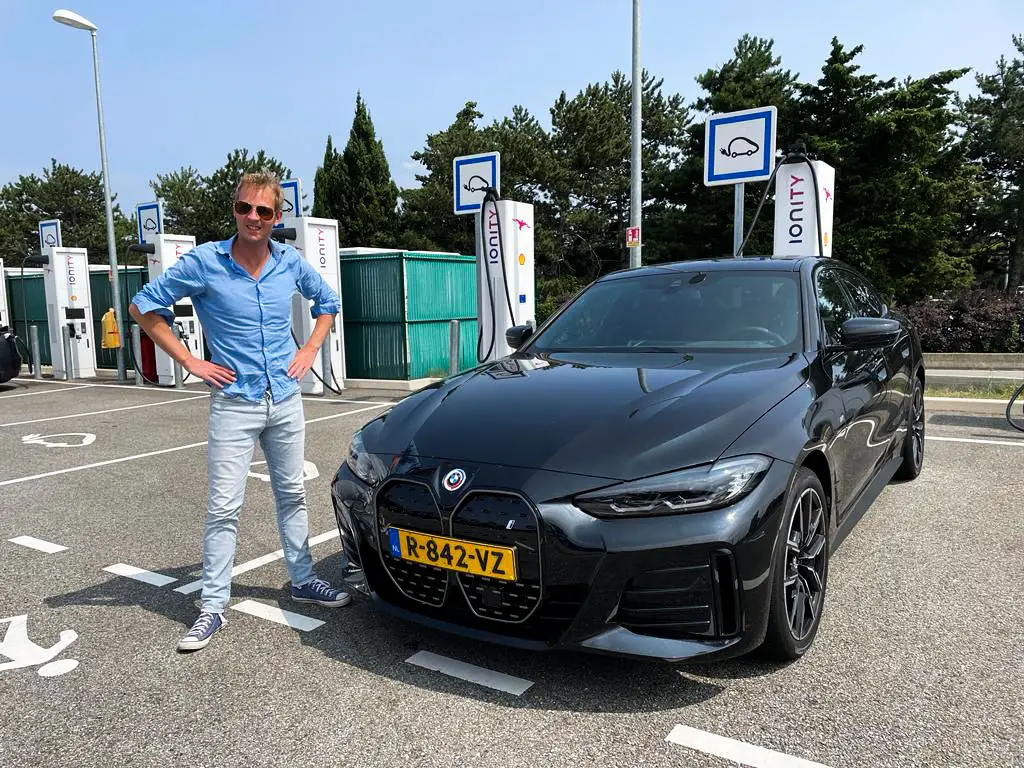TEST: In the middle of summer vacation with an EV to southern France in 2023 (VIDEO)
No preparation
During our trip to southern France, we are going to do everything that until recently was unthinkable if you were going to take a faraway trip in an electric car. Completely unprepared, we rose to the challenge. No predetermined route past charging stations, only two charging passes in our possession, and the battery was only charged to 65 percent even when we left. Instead of judiciously driving 100 km/h everywhere, we kept the speed limit everywhere.
So during our trip, we not only have an eye on the French charging network, but also explore whether it is now possible to drive an electric car to France without any preparation, just as you would with a gasoline car. With a traditional car, you also don’t dot the route past gas stations and, moreover, you also don’t quietly go 100 km/h to save some gasoline. We want to see if that same carefree driving experience is now within reach for EV owners.
The article continues below the video
Cologne
It is 11:30 at night when the alarm clock rings in Twente. The idea was to leave at 00:00, but due to a hearty overnight breakfast, we don’t turn the proverbial key to the test car – the BMW i4 eDrive40 – until 01:00. Starting point: Hellendoorn. Final destination: Montélimar, about two hours above the Mediterranean. According to the on-board computer, 65 percent SoC (state of charge) is good for about 380 kilometers. Enough to make it to our first loading stop at Cologne, some 250 kilometers from Hellendoorn.
A good half hour after we left, we passed Enschede and crossed the German border. Soon we see the gray sign with five diagonal stripes: an invitation to drive as fast as we dare. The BMW has the potential to reach 190 km/h, but then we might not make it to Cologne. Given the already intense travel time of about 14 hours, we choose to sensibly set the cruise control to 150 km/h. It is not long before we reach our first loading stop.

We hadn’t mapped out a route, had we? No, the app A Better Route Planner did that for us. The BMW could have done it for us as well, but to make this test a little broader, we choose to use this well-known app. According to ABRP, we have to load for twenty minutes at our stop in Cologne. However, there we encounter a problem: the charging station does not appear to be working. It wouldn’t, would it? For a moment, it seems like we are back in 2015. Fortunately, we see in the app that the Cologne area is teeming with charging stations. We drive on and after about ten minutes we are at a garden center that has two 300 kW fast chargers in the parking lot. We lose only 15 minutes of time, but it makes us think. Are we going to see this more often?
Metz
After a twenty-minute charging session, we steer in the dark toward Metz, where the first Ionity charging station awaits us. With a well-filled battery, we set the cruise control to 160 km/h. Although we are not in a hurry – on such a long trip that is not a good idea – the Autobahn is completely empty. A quick calculation shows that driving slower does not save time. This is often the case with EVs, because a battery is so dead when you start driving hard. Then you are at the charger more often than you are driving.
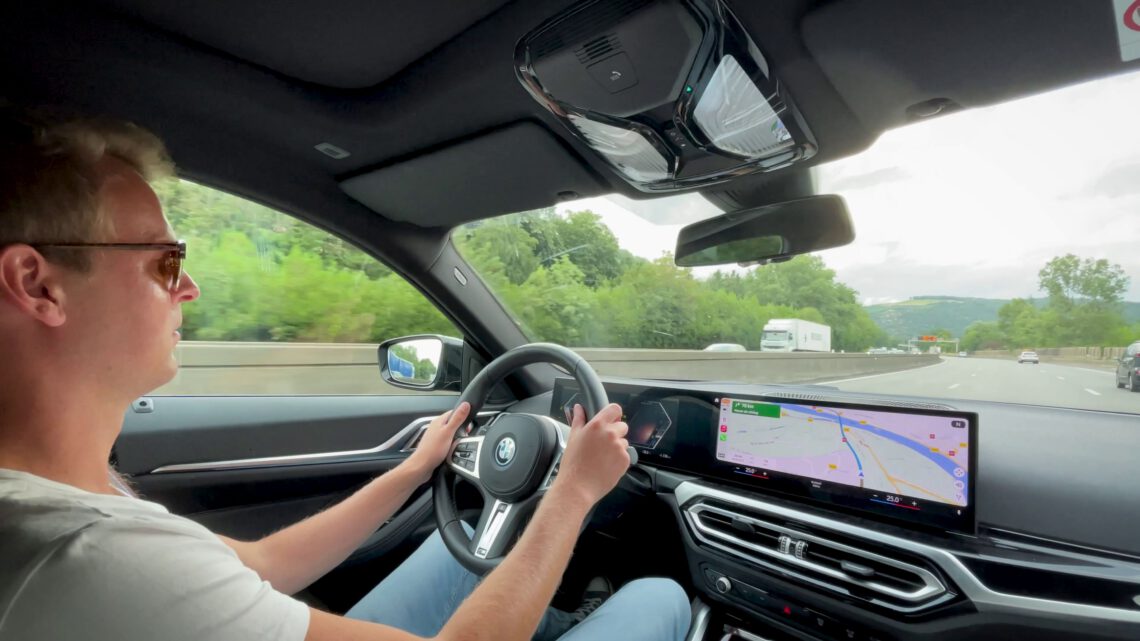
But the BMW i4 eDrive40 gets 590 kilometers on paper. A well-filled battery will get you 300 to 350 kilometers without major problems if you press the gas pedal deeply. Coincidentally, that is exactly the distance we want to cover before we need a break ourselves. Moreover, the i4 can charge tremendously fast – up to 210 kW (!) – so we don’t waste any time. A pee break, cup of coffee and then the battery is already charged enough for the next stage. In this respect, the i4 is an electric car that can effortlessly compete with a gasoline car on a long journey.
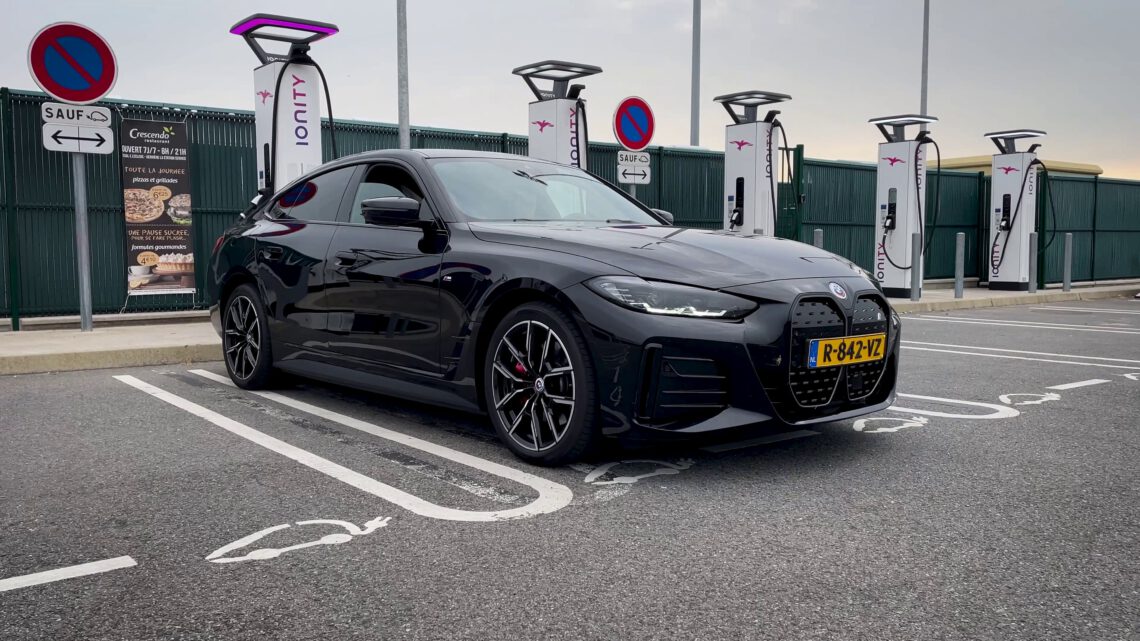
We reduce the speed to 130 km/h, for we have arrived – via Luxembourg – in France. Along the highway just outside Metz, we stop for 20 minutes at an Ionity location. Nearly thirty cars can load here. It won’t be the last time we hang the BMW on an Ionity pole. This charging provider has firmly established itself in France over the past year. Take a look at the map below. Half the country is full of these poles. A good development, because until very recently it was a huge challenge to drive an EV through France.
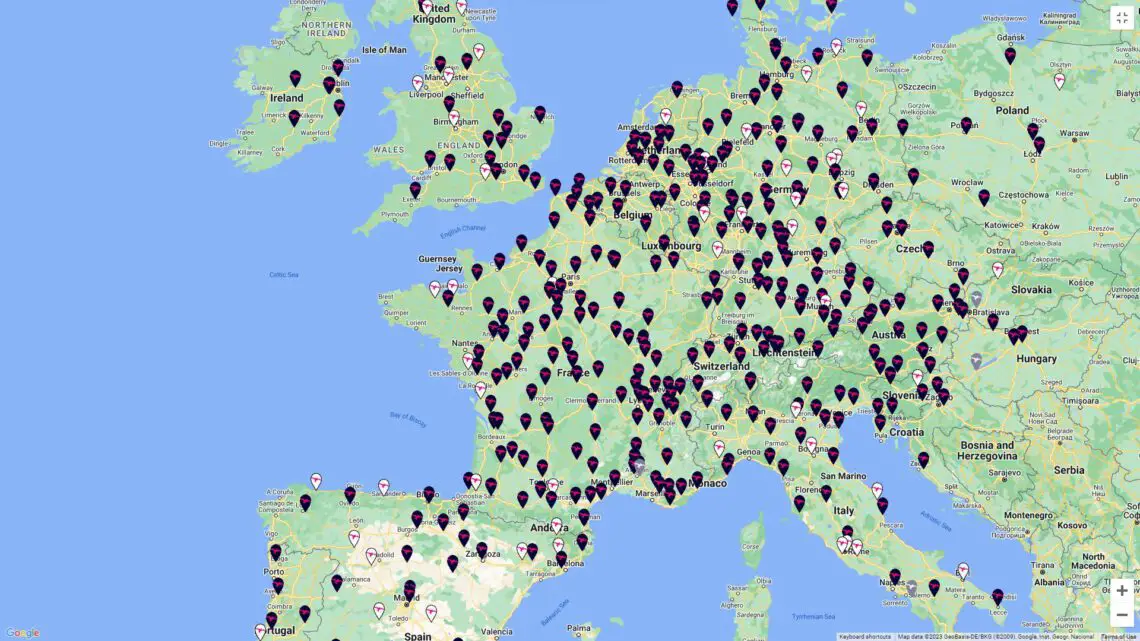
Lyon
By now it is well and truly busy on the Autoroute du soleil. It is rush hour on the north-south route from Paris to Marseille. We soon find that we can skip a recharge in Dijon – the battery is still full enough – and motor on to Lyon. About 40 kilometers above France’s second city, Fastned has a large location standing. Again, about twenty cars can fill their batteries in a short time. Fastned is also pushing hard in France. There are already 33 locations open, and the Dutch cargo farmer is still building vigorously.

That the company is from the Netherlands is evident from the fact that they take into account the typical Dutch vacationer. Many sites are set up so that you don’t have to unhitch a caravan, folding van or trailer. Also nice: Fastned charges 59 cents per kWh. That’s a competitive price along the highway. This makes them 10 cents cheaper than Ionity. Including subscription – 12 euros a month – you get 25 percent off this price. By the way, you can also get such a subscription from Ionity.

Montélimar
Twenty minutes later, the final stage breaks. We have only 200 kilometers to go to Montélimar. Without difficulty we pass Lyon. Rush hour is over and the infamous tunnel that runs under the city is not crowded. Without delay, we continue south.
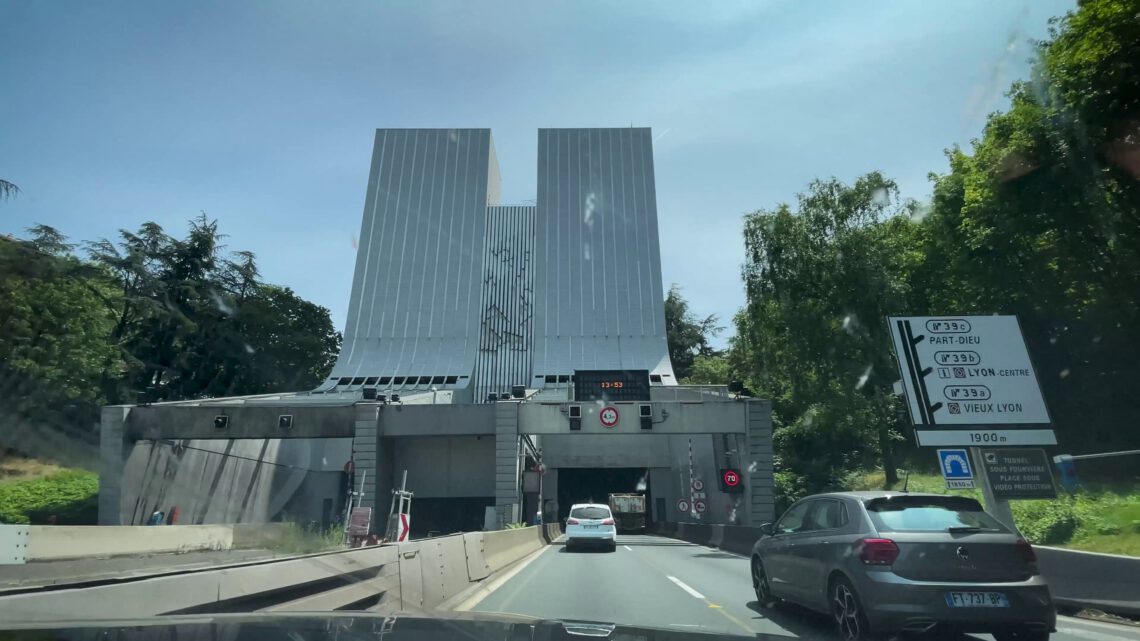
Before we know it, we reach Montélimar. Before driving to our overnight stop, we get some quick groceries. Lidl is the first supermarket we encounter. What seems? You can load there. Fast charging even, up to 120 kW! You can load at almost all Lidl branches in France. Not everywhere as fast, but there is often at least a 22 kW charger. The German grocer charges only 26 cents per kWh. You can hardly charge cheaper at home.

It is indicative of the tremendous development of the country’s charging infrastructure in a short period of time. These days, you can go to the most unexpected places to charge your car. Even in the smallest, most remote villages, you often come across public charging stations, often with a charging capacity of 22 kW.
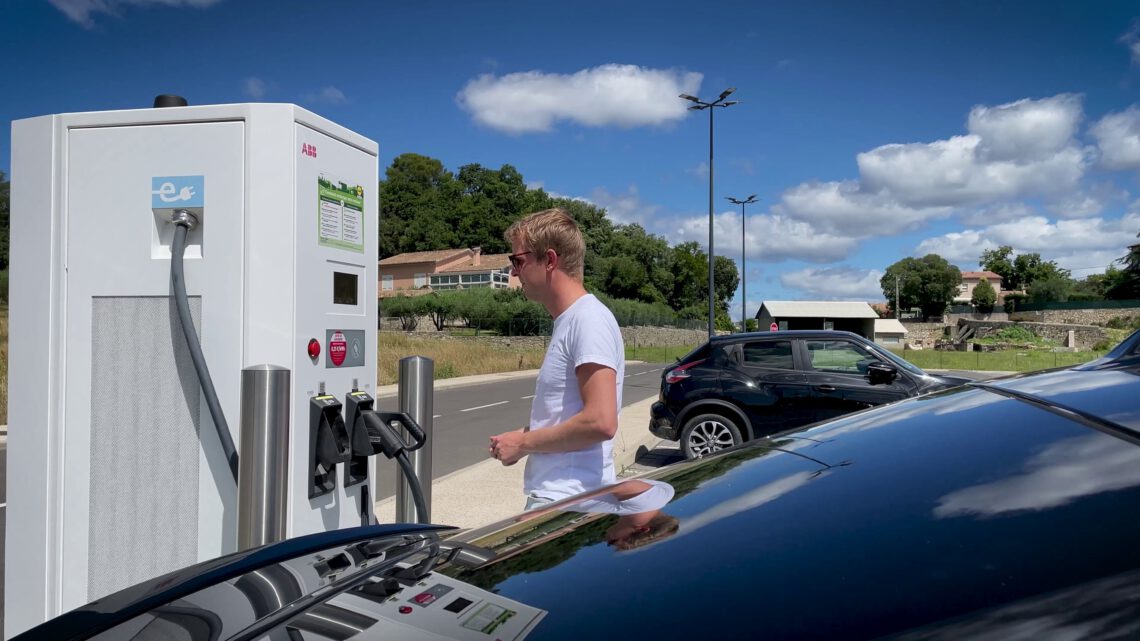
Conclusion
It is now 3:30 p.m. when we plug the BMW into the Lidl charging station. We have made the trip to this destination many times before, but always with an internal combustion engine car. Never did we do it faster. It is a new world in France in that respect. Every 50 to 100 kilometers you encounter a fast charger. So we just dare to say it: from now on, there is no excuse not to take an EV to France. It can just be done, easily.
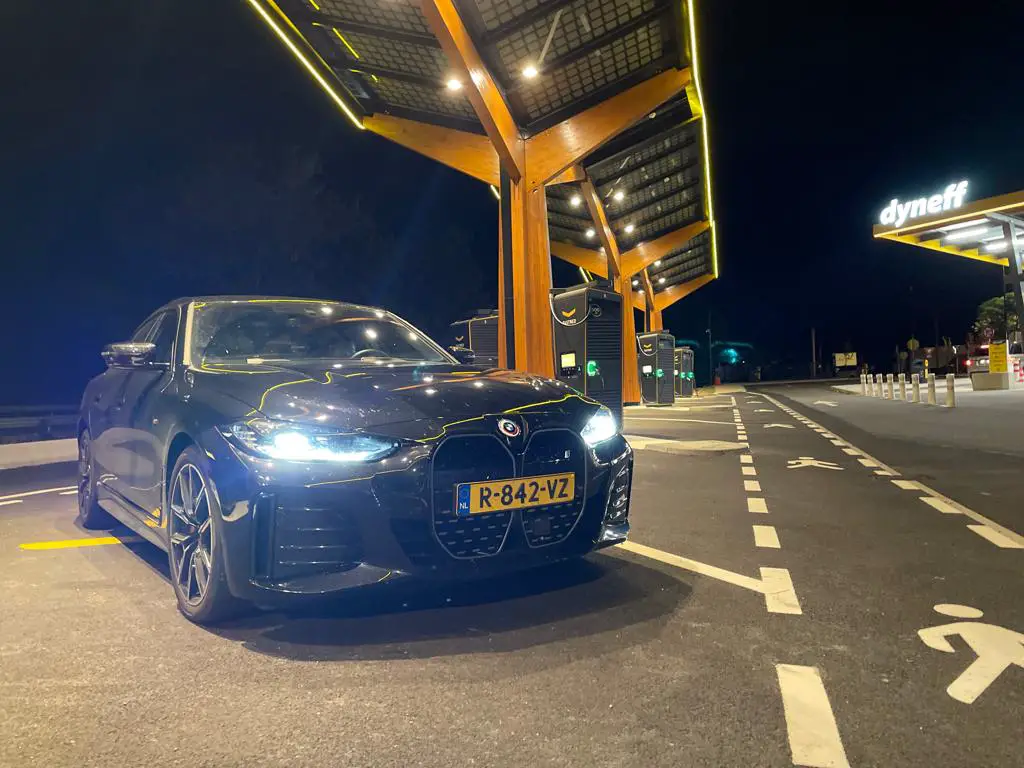
Of course, it helps tremendously if you own a puking EV, like the BMW i4 eDrive40. We can’t help but tip our hats to this car. We didn’t make it easy for him, but the car made it easy for us. We almost always needed a break before the car did. Moreover, there was always at least 100 kilometers left in the battery pack when we looked up a charger. So we did not suffer from range anxiety. But even with EVs with less endurance, you can descend to the south of France just fine in 2023. You’ll just have to charge more often along the way. But know this: so those loading spots are plentiful and there are only more coming. Bon voyage!

